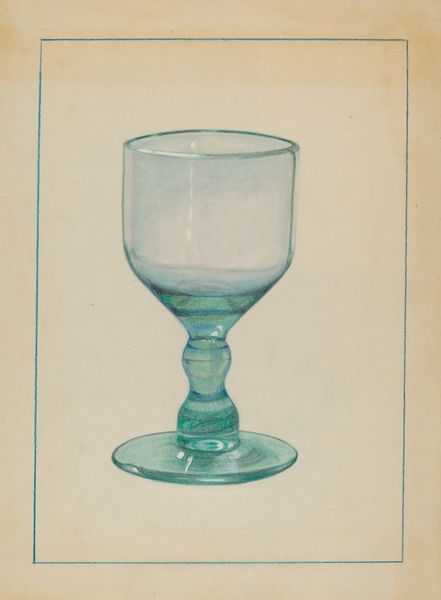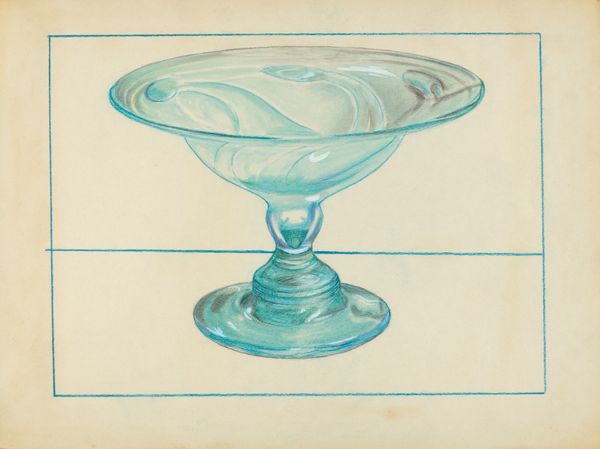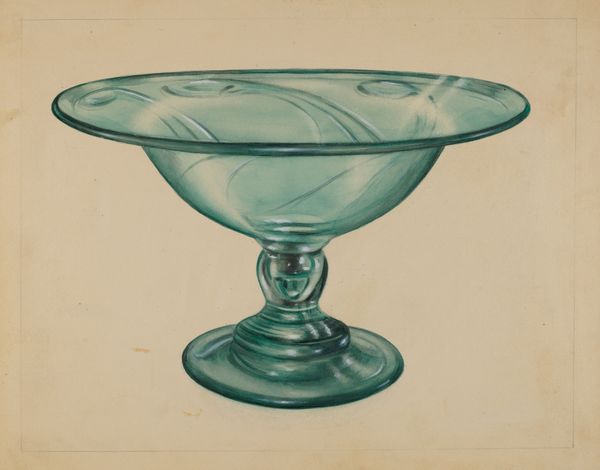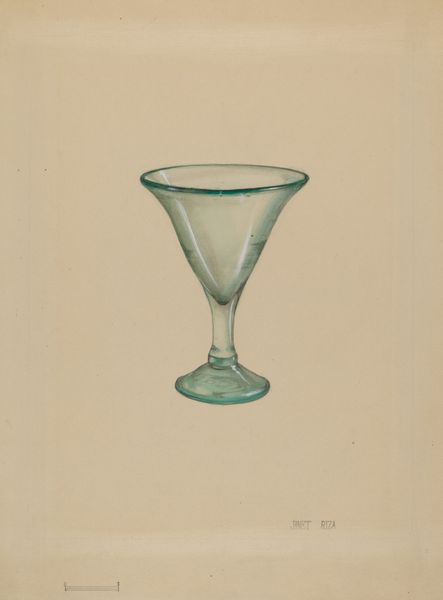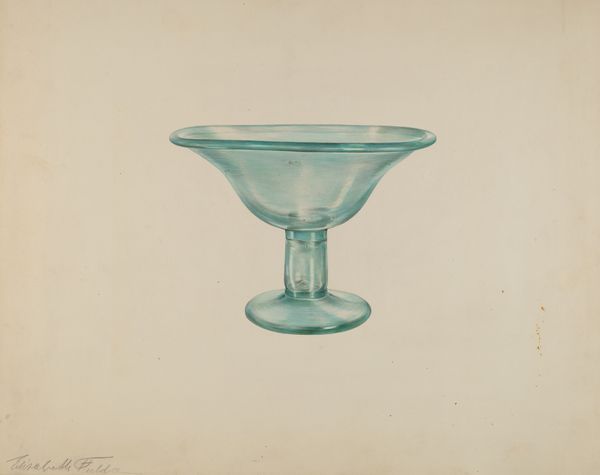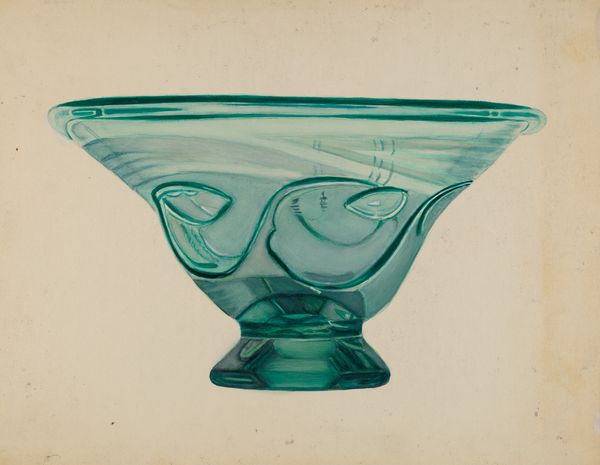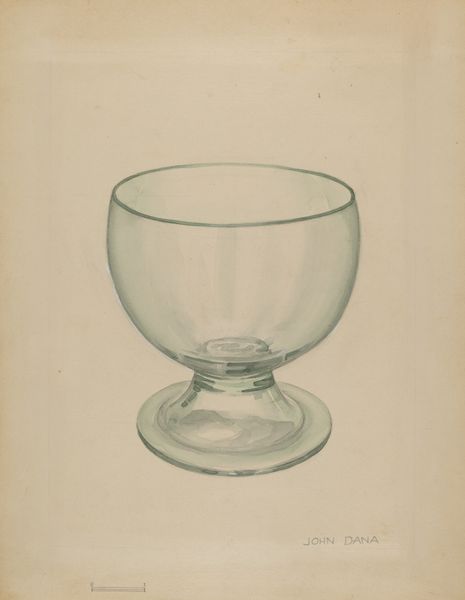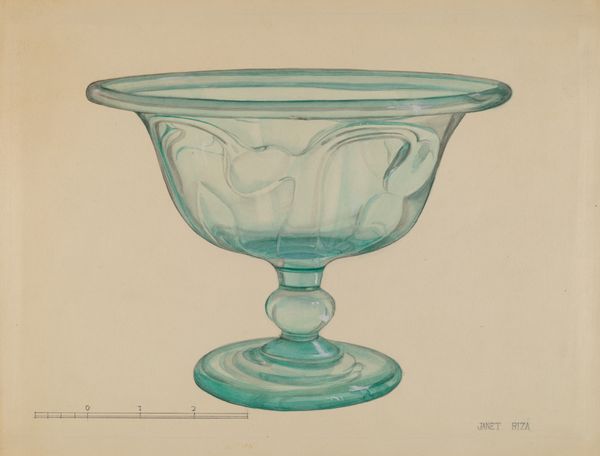
drawing, glass, watercolor
#
drawing
#
glass
#
watercolor
#
realism
Dimensions: overall: 30.2 x 22.7 cm (11 7/8 x 8 15/16 in.) Original IAD Object: 5 7/8" high; 8" in diameter
Copyright: National Gallery of Art: CC0 1.0
Curator: Here we have "Compote," a watercolor and pencil drawing of a glass dish made sometime between 1935 and 1942, by Janet Riza. Editor: It strikes me as strangely comforting. There's a delicacy in the rendering, but also a solid, almost domestic feel. The aqua-tinted glass suggests memories, perhaps of bygone eras and a certain lifestyle. Curator: Yes, there’s definitely a nostalgic quality evoked here, perhaps consciously employed by the artist. Watercolors often have that association, especially when depicting mundane, household objects. Notice the reflections and refractions in the glass. Those are hardly mundane, speaking symbolically. Editor: The subtle shifts in color definitely create an almost ethereal transparency. It hints at the illusion of glass; both there and not there. And that makes me think about visibility, about how objects, even utilitarian ones like this, can be freighted with cultural significance. This simple glass becomes more than it seems. Curator: The symbolic aspect intrigues me too. Compotes are traditionally used to serve fruit. The fruit then becomes linked to the traditional meaning of "plenty," going as far back as ancient Roman iconography. Did Janet Riza create the image in wartime and choose the imagery for that very reason? Editor: It's fascinating to think about how domestic objects become visual markers of our identities and social standings. Perhaps, at the time this piece was created, there was an undercurrent questioning who was granted "plenty" in that era. We can find a sense of societal values represented within such items, if only indirectly. Curator: Well, looking closer at the almost botanical embellishments within the glass itself – those engraved designs - I wonder if the artist intended those as subtle symbols that might reflect something about her time. It adds layers to what appears, on the surface, to be just a rendering of a glass object. Editor: Absolutely. This unassuming "Compote" offers a powerful invitation to look past surfaces. I appreciate that it provides this space for questions around history and social commentary. Curator: It's amazing to see how the piece creates space for us to bring different aspects to our understanding of its meaning and the history it embodies. Editor: Agreed. These artifacts, so ordinary at first, hold narratives for us all, encouraging engagement with histories.
Comments
No comments
Be the first to comment and join the conversation on the ultimate creative platform.
